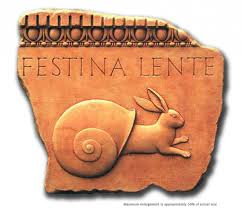- Home
- Counseling and Know-how
- Thinking, Fast and Slow by Dan ...

Kahneman set himself the non-trivial task of precipitating forty years and running of research into a single tome. His is to be welcomed as a grand achievement, and a lasting landmark in psychological literature, suggested to be thaught to new generations, beginners and laymen as soon as possible.
Humans are not fully rational agents. Their behavior is not simply maximizing the expected utility, because like it of not it is influenced by some hard-wired (that is, evolutionarily developed) pathways that are not foreseen in purely rational settings. That’s where behavioral economics is making and impact in common life and in policy making nowadays. But standard economic theory is easier and more amenable, so it is still adopted as reference by most economic shools (Chicago in primis) in spite of the countless falsifications (to the dislike of Popper, for one).
As one of the (awarded) founders of behavioral economics, Kahneman and his maverick of a colleague and friend Tversky had a tremendous impact with their delving into actual rather than supposed human behavior. Their studies of decisions under uncertainty crystallized in Prospect Theory, which overcomes Bernoulli’s theory of utility in using the reference point (gain and losses more than state values), diminishing sensitivity and loss aversion. The consequent fourfold pattern of decision context as a lot to predict and explain about actual choices as expressed by bets.
Kahneman leads the reader through the information, hard facts and evidence he and colleagues have gathered throughout with the unassuming tone of someone who is wise enough to know that what he is reveiling applies to himself first. He is describing, not prescribing, as he believes that there is little to do to overcome biases more than stop and reflect. We are all under their influence, willing or not, and the best we can do is to be at least aware of that. Therefore Kahneman confesses at the right beginning that he aimed ultimately at extendint the vocabulary of coffee machine gossipers with precise keywords denoting in a nutshell behavioral traits and patterns that are there to be noticed when in place.
The cornerstone is the distinction between two main ways of thinking. The default one (System 1) is always active and set to make constantly sense of the world around. This goes far beyond sensory data gathering, as it involved instantaneous causal interpretation to make out a convincing explanatory story. This comes from evolutionary advantage for humans, and it is a way of thinking that in being mostly unconscious and unstoppable is remarkably right most of the times; yet, it is also very wrong at times, as it is a bad statistician and uses averages, intensity matching and stereotypes rather than statistics and additions. It is a machine built to search for causal links and to jump to conclusions, and its hunches resonate deeply in ourselves, much more than we would consider possible. In fact they permeate System 2 as well, which is the more systematic and logical system but also more expensive and indolent, which we tend to leave dormient as far as we can. Its working is slower, more precise and comprehensive (thought System 1 also builds on practice and is remarkable in synthesis), but costly, so it also adopts hunches as hooks and references to leverage his burden. System 2 ultimately should help overcoming the shortcomings of biases and heuristics, which affects our routine thoughts while leaving us with the covert illusion of confidence in right thinking – and more disturbingly, of pure free will.
Availability (WYSIATI: the coherence of the story is more important to System 1 than the quantity and quality of its content), outcome and confirmation biases, narrow and broad framing, endowement, possibility and certainty effects, inside and outside view, base and causal rates, substitution, planning and narrative fallacies (the latter mutuated by Taleb, who in turn was influence by Kahneman in his thought), priming, cognitive ease, reversal of judgements, and more: these are some of the patterns of hard-wired shortcuts we are embedded with and make us deviate from purely rational behavior. Kahneman comments on them in short sentences and confidential tone, sometimes referring to personal events and his own errors, and never indulging in abstract speculations (mostly left to the reades, as it should be).
Kahneman also distinguishes between experiencing and remembering selves (construction of System 1 and 2, respectively) and argues that their account of experiences is rather different, and that peak-end and time neglect strategies are at play when describing happiness or life experience, for instance. This has consequencies as miswanting, and distorts our view of events substantially – in the name of mental economy, as always.
It is interesting to get to know that some of such findings are now taken into account in actual policy making under the name of “libertarian paternalism”, which advocate the need to hint people to the right direction in long-term benefit as compared to let them completely free (as advocated by pure libertarians).
A must-read book of sort, feeling like being told how the engine we are constantly using is actually working (though without much neurological details), of like the buffling solutions to behavioral puzzles be reveiled at once.








